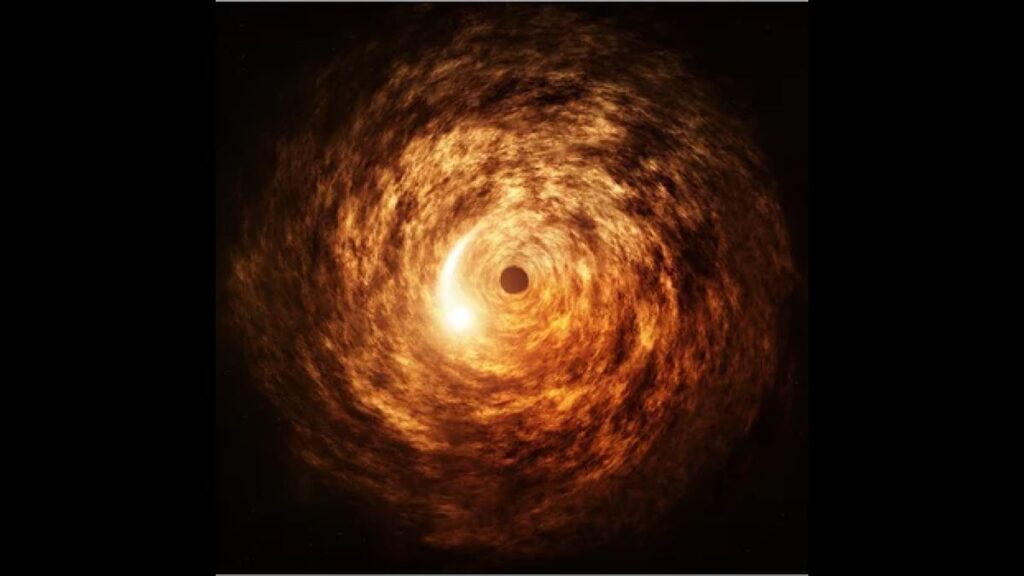The James Webb Space Telescope (JWST) has detected a flare from the supermassive black hole at the center of the Milky Way — and it could help explain why these strange outbursts occur..
Sagittarius A* is 4 million times the mass of the sun and sits 26,000 light-years away from Earth, according to NASA. The disk of dust and gas orbiting this black hole regularly sends off flares, or high-energy flashes of light, probably caused by magnetic field disturbances. Simulations hint that flares happen when two magnetic field lines connect, releasing a burst of energy, researchers from the Max Planck Institute for Radio Astronomy in Germany said in a statement. Energized electrons zip along these connected lines at near the speed of light, emitting high-energy radiation photons, or light particles.
Until recently, though, astronomers had only observed these flares in short-wave visible light and long-wave radio singles — not in the middle part of the electromagnetic spectrum.
“For over 20 years, we’ve known what happens in the radio and what happens in the near infrared, but the connection between them was never 100% clear or certain,” study co-lead author Joseph Michail, a researcher at the Harvard Center for Astrophysics, said in a statement. “This new observation in [mid-infrared] fills in that gap and connects the two.”
But now, the JWST can detect this mid-infrared region — the part of the spectrum humans experience as heat. The space telescope orbits the sun nearly a million miles (1.5 million kilometers) from Earth and has been making observations from that vantage point since 2022. On April 6, 2024, the JWST detected a 40-minute flare from the black hole.

The telescope’s observations backed up the simulations that suggest criss-crossing magnetic field lines drive the flares. The researchers saw links between variations in the short-wavelength measurements and the mid-infrared measurements, which indicate that speeding electrons are indeed ejecting photons, or packets of light, as they zip along magnetic field lines — a process called synchrotron emission.
“While our observations suggest that Sgr A*’s mid-IR emission does indeed result from synchrotron emission from cooling electrons, there’s more to understand about magnetic reconnection and the turbulence in Sgr A*’s accretion disk,” study co-lead author Sebastiano von Fellenberg, a researcher at the Max Planck Institute for Radio Astronomy, said in the statement. “This first-ever mid-IR detection, and the variability seen with the SMA [Submillimeter Array], has not only filled a gap in our understanding of what has caused the flare in Sgr A* but has also opened a new line of important inquiry.”
The findings, posted to the physics preprint database arXiv.org, have been accepted for publication in The Astrophysical Journal Letters.
